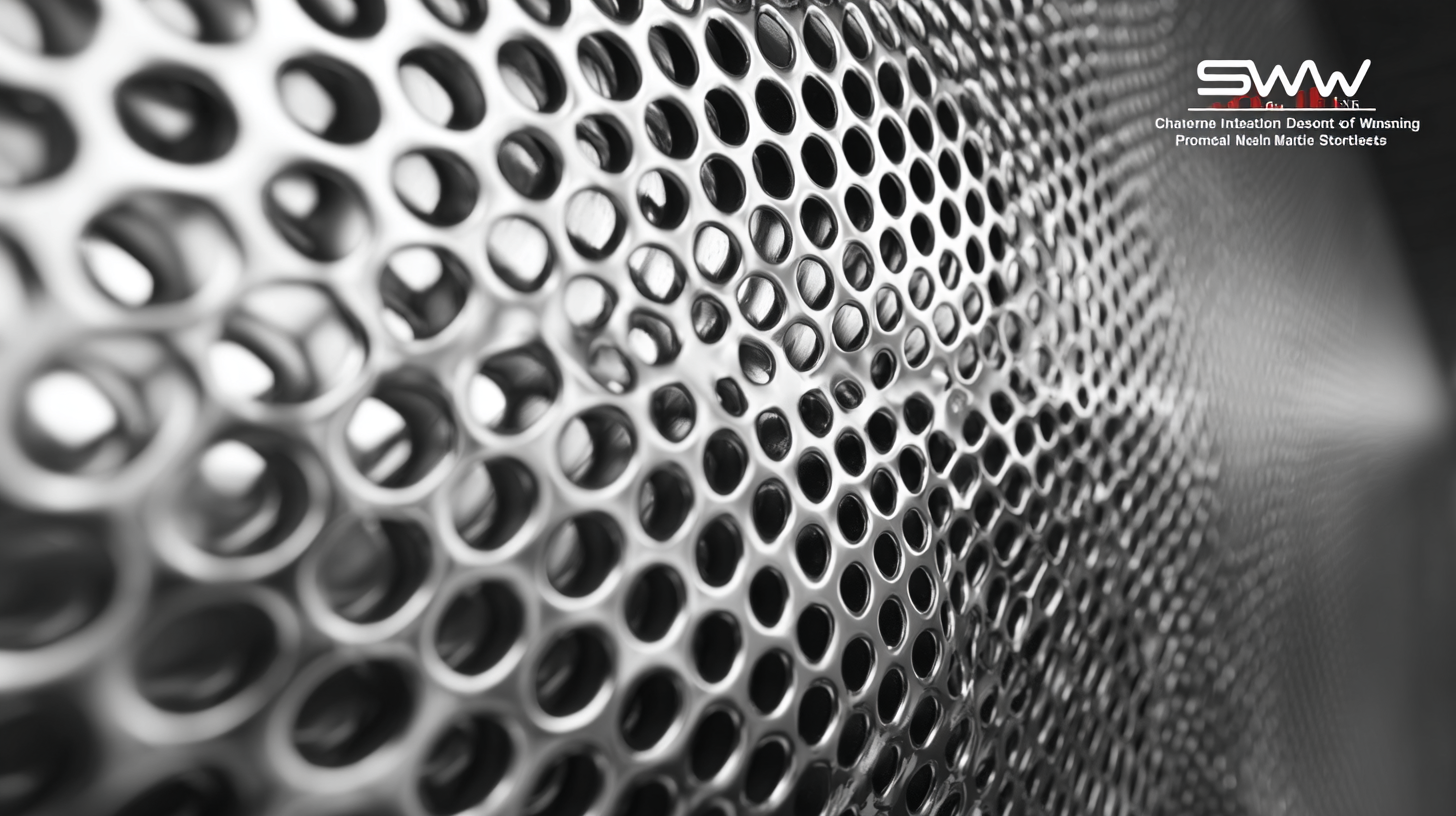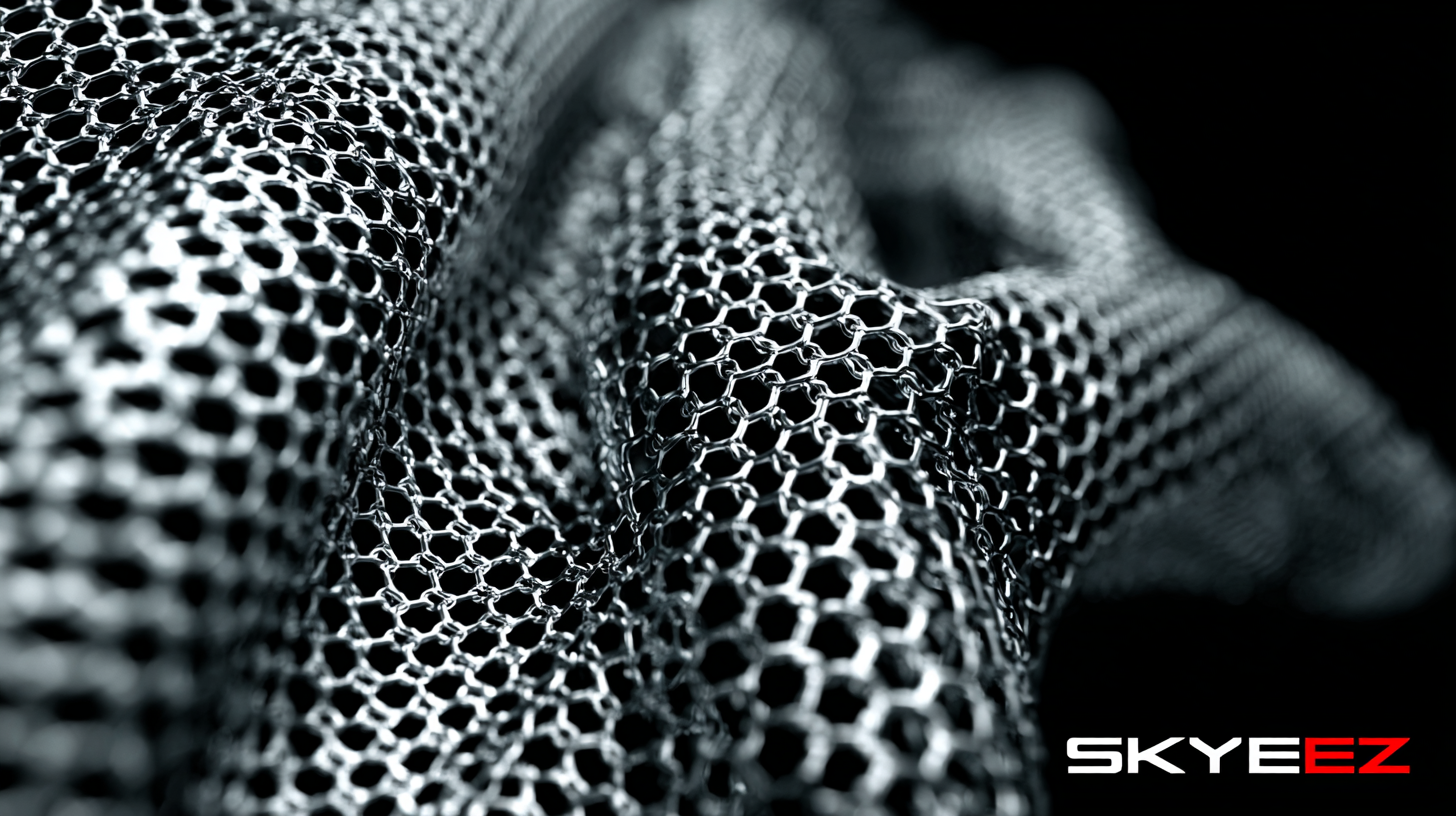In recent years, the global market for perforated steel mesh has witnessed significant growth, driven by advancements in manufacturing technologies and a rising demand for high-quality materials across various industries. According to a report by Market Research Future, the global perforated metal market is projected to reach USD 3 billion by 2025, with a CAGR of 5.4% from 2019 to 2025. Chinese innovation plays a crucial role in this movement, as manufacturers leverage cutting-edge techniques and digital tools to enhance product performance and quality. This dynamic not only positions China as a key player in the perforated steel mesh sector but also elevates its presence in international markets, meeting the increasing demand for sustainable and aesthetically pleasing architectural solutions. As industries become more competitive, the ability to deliver customized, high-quality perforated steel mesh products is essential for driving global sales and fostering long-term partnerships.

China's manufacturing sector has undergone a significant transformation, particularly in the production of perforated steel mesh. This evolution is characterized by the adoption of advanced techniques and technologies that enhance both quality and efficiency. According to a report by Grand View Research, the global perforated metal market is projected to reach USD 3.9 billion by 2025, growing at a CAGR of 5.6%. This robust growth can be attributed to the increasing demand for high-quality materials across various industries, including construction, automotive, and filtration.
Chinese manufacturers have employed state-of-the-art machinery and innovative production methodologies, resulting in superior product offerings that meet international standards. Techniques such as laser cutting and automated punching not only improve precision but also reduce waste, contributing to environmental sustainability. Additionally, a survey from MarketsandMarkets indicates that as of 2022, over 60% of the world's perforated metal products were produced in China, underscoring the country's dominance in this highly competitive market. By leveraging these advanced techniques, China is not only driving its own economic growth but also setting a benchmark for quality in the global perforated steel mesh sector.

The demand for high-quality perforated steel mesh has witnessed an unprecedented surge globally, driven by advancements in manufacturing technology and increased applications across various industries. According to a recent report by Market Research Future, the global perforated metal market is expected to exceed USD 5.4 billion by 2027, growing at a CAGR of 6.5%. This growth is largely attributed to the rising use of perforated steel mesh in sectors such as construction, automotive, and filtration, where durability and efficiency are paramount.
As the innovation landscape in China continues to evolve, manufacturers are leveraging cutting-edge techniques to produce high-quality perforated steel mesh that meets international standards. The enhanced product quality not only boosts market credibility but also significantly contributes to the increased exports of perforated steel because of their competitive pricing and superior performance. It's crucial for industry players to stay abreast of these trends, as they can influence procurement strategies and supply chain decisions.
Tip: When selecting perforated steel mesh for your projects, consider specifications such as hole size, gauge, and material type to ensure compatibility with your application’s requirements.
Addressing environmental concerns, manufacturers are also investing in sustainable practices, as noted by the Industry Recycling Association, which projects an increase in the use of recycled steel in production by over 20% in the next five years. This not only supports eco-friendly practices but also aligns with the global push towards sustainability.
Tip: Opting for perforated steel products made from recycled materials can enhance your project’s sustainability profile while also reducing costs.
In recent years, the steel production industry has witnessed a significant shift towards sustainability, with Chinese factories leading the way in setting new environmental standards. By adopting advanced technologies and innovative practices, these facilities are not only optimizing their production processes but also reducing their carbon footprints. The integration of renewable energy sources and energy-efficient machinery has become commonplace, positioning Chinese manufacturers at the forefront of the global steel market.
Moreover, the focus on sustainability goes hand in hand with a commitment to high-quality products, like perforated steel mesh. This versatile material, essential for various applications ranging from construction to automotive, benefits from the improved production methods that prioritize both performance and ecological responsibility. As these factories refine their processes, they are also crafting materials that meet stringent international standards, thereby enhancing their appeal in global markets. The commitment to sustainability is not just a trend; it reflects a broader recognition that environmentally friendly practices are vital for long-term success in the competitive steel industry.
The landscape of perforated steel mesh applications is being transformed by innovative design and advanced technology. According to a recent report by Markets and Markets, the global perforated metal market is projected to reach USD 5.8 billion by 2026, driven largely by innovations in manufacturing processes and material science. Technologies such as laser cutting and CNC machining have enabled manufacturers to create intricate patterns and customized solutions, which cater to specific industry needs, from construction to automotive.
Moreover, advancements in computational design software have empowered engineers to optimize the performance characteristics of perforated steel mesh. By simulating various configurations, companies can ensure that their products not only meet aesthetic demands but also enhance functional capabilities like weight reduction and airflow control. A study from Grand View Research suggests that the demand for lightweight materials in the aerospace and automotive sectors is anticipated to grow at a compound annual growth rate (CAGR) of 5.5% from 2021 to 2028, further highlighting the role of innovative design in driving global sales. This intersection of technology and design is undeniably shaping a more efficient and versatile market for high-quality perforated steel mesh.

The global sales of perforated steel mesh are being significantly influenced by innovation from China, particularly in industries demanding high-quality materials. The versatility and durability of perforated steel mesh have made it a staple in various sectors, including construction, automotive, and pharmaceuticals. As these industries evolve, the need for advanced, high-performance materials becomes critical. Innovators in China are not only meeting these demands but also setting trends that resonate across international markets.
Key industries driving the demand for perforated steel mesh solutions encompass pharmaceuticals, where protective packaging solutions, such as blister packs, require precision-engineered materials. According to recent market research, the global pharmaceutical blister packaging market is expected to reach $46.65 billion by 2034, with a compound annual growth rate (CAGR) of 7.72%. This growth trajectory underscores the escalating reliance on high-quality perforated materials that ensure product integrity and user safety. Furthermore, sectors like construction are witnessing increased investments in perforated steel mesh, further propelling innovation and demand, thereby creating a ripple effect in global manufacturing and sales landscapes.
